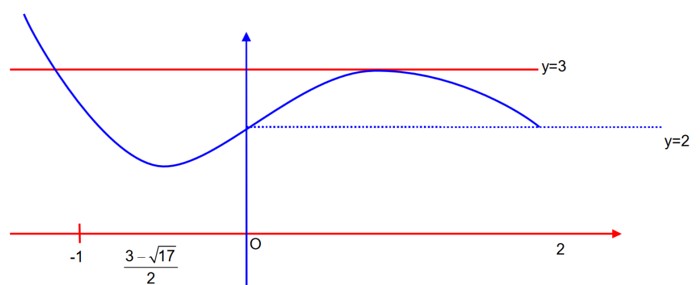Let P(x) be a real polynomial of degree 3 which vanishes at x = -3. Let P(x) have local minima at x = 1, local maxima at x = -1 and ∫??¹ P(x)dx = 18, then the sum of all the coefficients of the polynomial P(x) is equal to......
Let P(x) be a real polynomial of degree 3 which vanishes at x = -3. Let P(x) have local minima at x = 1, local maxima at x = -1 and ∫??¹ P(x)dx = 18, then the sum of all the coefficients of the polynomial P(x) is equal to......
-
1 Answer
-
P' (x) = a (x-1) (x+1) = a (x²-1).
P (x) = ∫ P' (x) dx = a (x³/3 - x) + b.
Given P (-3) = 0 ⇒ a (-9+3) + b = 0 ⇒ b = 6a.
Given ∫ P (x)dx = 18. Assuming the integration is over a symmetric interval like [-c, c] and using the fact that a (x³/3-x) is an odd function, ∫ (a (x³/3 - x)dx = 0. Then ∫ b dx = 18. If the interval is [-1, 1], this would be b (1 - (-1) = 2b = 18, so b=9.
With b=9, we find a = b/6 = 9/6 = 3/2.
So, P (x) = 3/2 (x³/3 - x) + 9 = x³/2 - 3x/2 + 9.
The sum of all coefficients is 1/2 - 3/2 + 9 = -1 + 9 = 8.
Similar Questions for you
option (C) is incorrect, there will be minima.

absolute minimum
absolute maximum = 3
If f(x) has maximum value at x = 1 then
……..(i)
……..(ii)
From (i) and (ii) we get
OP2 = x2 = y2
y = ex, y’ = ex,
slope of normal =
By hit and trial we get
Taking an Exam? Selecting a College?
Get authentic answers from experts, students and alumni that you won't find anywhere else
Sign Up on ShikshaOn Shiksha, get access to
- 65k Colleges
- 1.2k Exams
- 679k Reviews
- 1800k Answers
